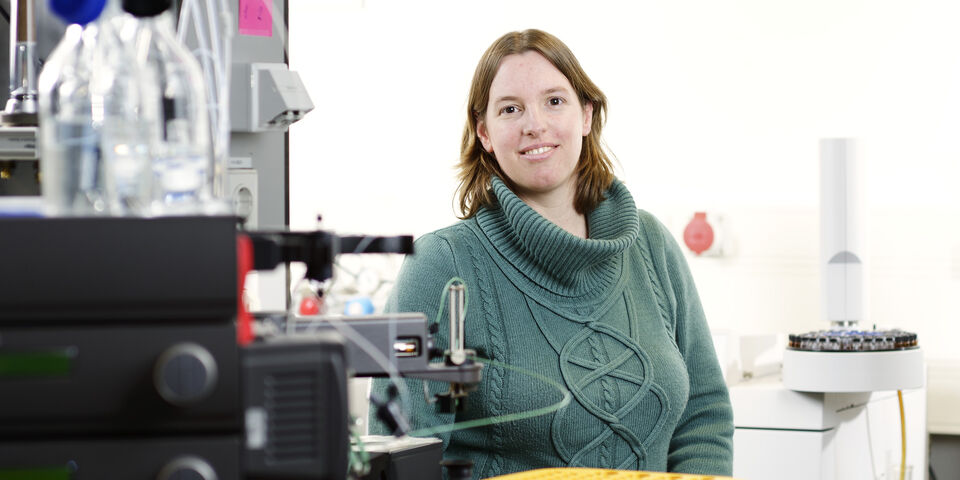Four birds with one stone for paper production
Prof.dr.ir. Maaike Kroon is the new heroine of the paper industry: the young professor discovered vegetable solvents that can be used to extract the most important component of paper, cellulose, from wood at lower temperatures (and so possibly much cheaper). On top of that, the process releases a raw material that can be used for bioplastics and environmentally-friendly fuels. Fourteen European paper factories are so excited about the discovery they are funding two doctoral candidates to do further research.
“Paper is mostly cellulose”, says Maaike Kroon. And that cellulose is extracted from wood, she tells us. “However, wood is a complex mixture of cellulose, lignin, hemicelluloses, water, salts, and several other elements.” The challenging part of making paper is separating the cellulose (the fibers that make wood and paper firm) from lignin (the glue that keeps those fibers together). “Lignin gives wood its color, too”, Kroon explains. “It’s visible in the knots of trees especially, which is why knotty wood isn’t great for making paper.”
To separate lignin from cellulose today, wood pulp is dissolved under pressure in a hot bath (about 150 degrees Celsius) consisting of water and chemicals. “Unfortunately, the high temperature causes part of the cellulose chains to fall apart, and that’s detrimental to the quality of the paper. For that same reason, recycled paper is of a lesser quality. If we can lower the temperature in the separation process not only do we save energy, but it would yield better paper as well.”
On top of that, drying the paper pulp is the most energy-consuming part of the process, Kroon says. “To evaporate the water, the waste products are burnt - especially lignin. People call it energy recycling to make it sound fancy, but it’s a shame really, because lignin can be used to make high-grade chemicals and bioplastics.”
Kroon, the youngest female professor of the Netherlands upon her appointment at the Department of Chemical Engineering at TU/e in 2011, now seems to have discovered a solvent that kills not two, but four birds with one stone: it’s environmentally friendly (vegetable and non-toxic), works at relatively low temperatures (60-80 degrees Celsius instead of 150-200), doesn’t contain water that must be vaporized, and on top of it all pure lignin is a byproduct that can be used as raw material for other products. Still, there’s not really a market for lignin yet, Kroon comments. It’s still considered biomass waste mostly, and only if there’s a way to extract sulfur-free lignin on a large scale -and Kroon’s method may be just that- the polymer will be seriously interesting to the industry. But that doesn’t mean researchers aren’t working on it already.
Kroon’s colleague prof.dr.ir. Emiel Hensen, who works at the same department at TU/e and was granted a prestigious Vici Grant recently, is working on catalysts that can convert lignin into useful products. And at Mechanical Engineering, dr.ir. Michael Boot developed the CyclOx for which lignin is essential. These types of research projects are just up the alley of the Chemelot Institute for Science and Technology (InScite) that started last February, according to Kroon. At the InScite institute, located in South Limburg, TU/e, Maastricht University, and major chemical company DSM will be researching ways to find chemical building blocks from biomass, among other things.
What’s special about Kroon’s method is the use of a special type of solvents, deep eutectic solvents (DES). They are created by mixing two solids. “We’re talking plain granules, like sugar and an acid. But when mixed, they form a liquid because of interacting hydrogen bonds: one solid is a hydrogen bond donor, the other a hydrogen bond acceptor.”


Discussion